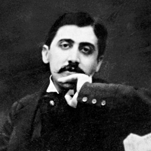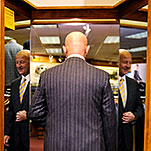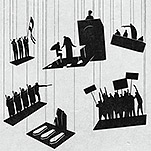It’s Election Day. Virginians are electing a new governor, New Yorkers are choosing a new mayor, and all over the country, dozens of local races are being decided. Because this is an off-year election, in which there are no federal races, voter turnout is going to be abysmal. We all know that.
Op-Ed Columnist
Fixing the System
By JOE NOCERA
Published: November 4, 2013
Connect With Us on Twitter
For Op-Ed, follow @nytopinion and to hear from the editorial page editor, Andrew Rosenthal, follow @andyrNYT.
In Australia, people who don’t vote are fined. In America, people can go to jail for skipping jury duty, but there’s no penalty for not voting. I’m not advocating either fines or jail — not today, anyway — but I’ve got five reforms in mind that could both invigorate the electorate and encourage more responsive, and less extreme, political candidates. Here they are, in no particular order:
Move elections to the weekend. Do you know why elections fall on a Tuesday in early November? I didn’t either. According to a group called Why Tuesday?, it goes back to the 1840s, when “farmers needed a day to get to the county seat, a day to vote, and a day to get back, without interfering with the three days of worship.” Today, of course, casting your ballot on a Tuesday is an impediment: lines in urban areas are long, people have to get to work, etc. It is especially difficult for blue-collar workers — a k a Democratic voters — who don’t have the same wiggle room as white-collar employees.
Chris Rock — yes, Chris Rock — has been quoted as saying that this is the reason Election Day remains on Tuesday. “They don’t want you to vote,” he said in 2008. “If they did, they wouldn’t have it on a Tuesday.” Even if you aren’t conspiratorially minded, you have to admit that moving elections to the weekend makes a ridiculous amount of sense.
Term limits for the Supreme Court. Somewhat to my surprise, most of the experts I spoke to were against Congressional term limits. Norman Ornstein, the resident scholar at the American Enterprise Institute, believes that the unintended consequences of term limits would outweigh the benefits. (He cited, among other things, the likelihood that “they come to office thinking about their next job.”)
Instead, Ornstein proposes term limits for Supreme Court justices. If he could wave his magic wand, he would give the justices one 18-year term, and he would stagger them, so that a new justice joined the court — while another departed — every two years. Ornstein likes this idea, in part, because presidents would be willing to nominate older justices; now, the emphasis is on younger nominees who can remain on the court, and influence American society, for decades. I like the idea because nothing fuels partisan politics like a Supreme Court nomination. If the parties knew there would be a new nominee every two years, it might lessen the stakes just a bit, and bleed some of the anger out of politics.
Open primaries. Why are so many extremist Republicans being elected to Congress? A large part of the reason is that highly motivated, extremist voters dominate the current Republican primary system. Mickey Edwards, the former congressman who is now at the Aspen Institute, wrote a book last year called “The Parties Versus The People: How to Turn Republicans and Democrats Into Americans.” At the top of his list of reforms is open primaries — which would allow anybody to vote for any candidate. Indeed, California has already adopted an open primary system, in which the top two vote-getters run against each other in the general election — even if they are from the same party. As Adam Nagourney wrote in The Times a few weeks ago, this reform is one of the reasons California’s Legislature has become less partisan and more productive. Chances are good that the same reform at the federal level would produce the same result.
End gerrymandering. As a tool to entrench the party in power, few maneuvers can beat gerrymandering. It’s another reason that the Tea Party Republicans can pursue an agenda that most citizens disagree with: thanks to gerrymandering, their districts could not be safer. Here, again, California offers a better model. It has a 14-person commission made up of five Democrats, five Republicans and four people unaffiliated with either party. In 2011, the new commission redrew lines in a way that broadened the diversity of many districts. That is exactly what should happen everywhere.
Bring back the small donor. There are few things more discouraging to voters than the power of big money, which asserts itself mainly in the form of so-called superPACs. But New York City has shown how the small donor can matter again: it matches small donations 6 to 1. Thus, a contribution of $100 would add $600 to the candidate’s coffers. According to a study by the Brennan Center for Justice at the N.Y.U. School of Law, this system creates more donor diversity, greater participation, and, not least, greater attention by the candidates to small donors.
Those are my five favorite ideas for fixing the system for elections. What are yours? Send your favorite ideas to Nocerablog@nytimes.com and I’ll post the best on my blog.











